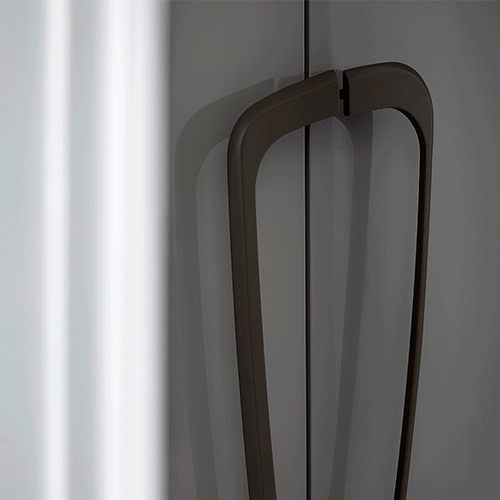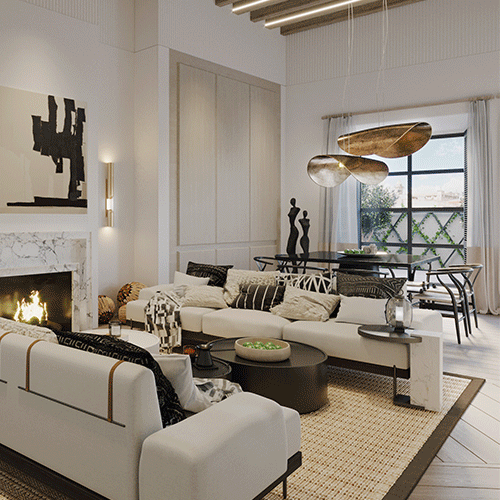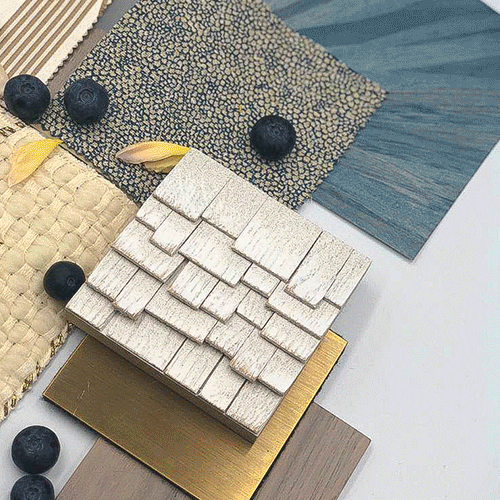The Future of Design – The Designer You Don’t Need…

Written by George Wolstenholme, sure to generate some debate as to how the future of design looks and how we might find our place within it.
Design Today
When you siphon out all of the hashtags, the prosecco dowsed supplier events, Cribs style video tours and White Label sub-brands; how much of design today actually has real substance, how much is actually just puffery, how much actually adds the appropriate value to a project and how much of what we are today should we be looking to be in the future?
As we stand today with vast availability of inspiration to influence design, accessibility to design tools and three-month design courses billed to ‘ready you for the professional world of the design,’ there is a hugely low bar of entry into the industry meaning a dilution of quality and value.
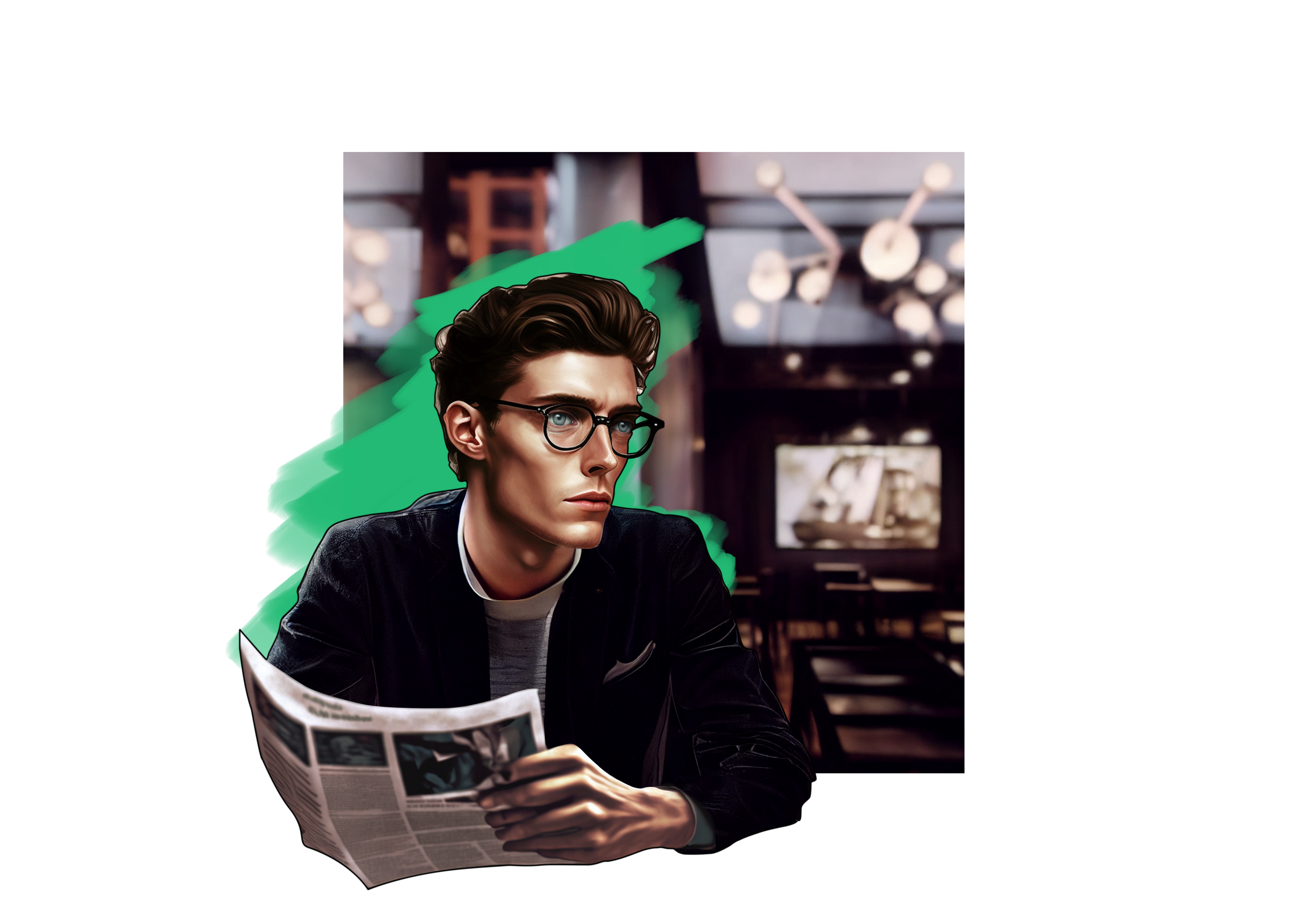
A low bar to entry isn’t always a bad thing, it can be celebrated where it provides a brilliant segway into the world of design for designers, suppliers, makers and builders with real talent and who bring some extremely valuable fresh blood to the market. But the other side is that it does ultimately bring some stragglers to the table that ultimately can't do any better than a motivated client would be able to do themselves. As a result, we find ourselves in a massively saturated market where unfortunately the bad outweighs the good and it’s becoming increasingly difficult for clients to find the right team to fulfil their aspirations.
This is all a huge subject, but in this article, I will touch upon some of what I see as important issues, how we slot into and are a product of a much bigger picture and some movements in other industries that may inform where we are moving towards. There is no way to delve into all cause and effects, but hopefully, some of the content can serve as inspiration for how every area of our industry from design to accounts, QS, procurement, CRM and delivery could make some disruptive changes and make the most of what is coming, streamline processes, increase efficiency and to find the right commercial sweet-spot in a skinny industry. How we can look to adapt and re-tool to re-instate the value in our work and become once more the designers you do need instead of fade into the designers you don’t.
The Knowledge (Professional Team) + The Murky Middle Bits (Delivery Vehicle) + The Client = The Value
Where is ‘The Value? And does ‘The Client’ actually see it? When it comes to offering discerning clients professional services, what they need is value, and if we want to command the right fees we need to start giving them a little more of it! The way I see it is that there are broadly three ingredients vital in achieving the highest possible value in a project.
‘The Value;’ in a project is what is seen, used and appreciated by the client and an appropriate associated cost.
The Ingredients:
‘The Client;’ is naturally the linchpin to the whole process. They need to be unlocked to uncover a project’s desired value, understand what is required to achieve ‘The Value,’ and not be let down by the ‘Knowledge’ or the ‘Murky Middle Bits’
‘The Murky Middle Bits;’ are basically the material processes that go into delivering a project and facilitating the transformation from ‘The Knowledge’ to ‘The Value.’ Specifically in our industry, this is essentially the main contractor and their various extensions.
‘The Knowledge;’ is the art of negotiating ‘The Murky Middle Bits’ to achieve ‘The Value’ for ‘The Client.’ It involves an intrinsic knowledge of ‘The Client.’ Knowing what they want, what they’ll pay for and how to get them there from creating the design package to working with the contractor towards its delivery.
The fabled perfect project ultimately relies on each of these three ingredients being utilised, optimised, respected and transparent with one another, if any (let alone all) of these ingredients under deliver, then no matter how you spin it, ultimately the project will be too expensive, too cheap, not be properly resolved and ‘The Value’ or the value the client never knew he wanted, never sees the light of day. Broadly speaking have arrived today at a juncture where for the most part each of these ingredients need to do their part to change. ‘The Knowledge’ often doesn’t possess it. ‘The Murky Middle Bit’ is full of so many unnecessary layers and to be quite honest - chaff; that it’s difficult to see the wood for the trees. Then ‘The Client’ often the innocent bystander, but can have a habit (either by not allowing a project team enough insight to enable a properly driven project, or by choosing not to engage with one of the project’s key processes) of not trusting the process, and to be quite honest by current standards, why would they? Each of these are issues in isolation which are then compounded by their effect on one another. There are obviously varying degrees of how much of a glow-up these ingredients need, but for even the slickest of operators how much can you actually say your s**t don’t stink?
We need to re-evaluate what the best parts of all of these ingredients are, not shy away from current and upcoming technologies and process within our industry but also others, cut out the parts detrimental to ‘The Value’ and decipher a new formula to deliver it...
Turning off the blinkers....
Compare the automotive industry to the construction industry and what you have is are two vast industries, automotive the smaller of the two is catered for via a small number of huge organisations and construction the larger, is catered for by a huge number of organisations big and small. For automotive, due to the small amount of players, the level of accountability for profitability due to tight competition for margin shares is huge, as a result the industry spends the most amount on R&D compared to any other sector and has a fully industrialised process end to end (part of this by extension is the requirement for highly efficient design), and massive productivity growth. Construction by comparison is much more fragmented and complex, the lion’s share of the products used in the industry come via industrialised processes, however when it comes to bringing these products together industrialisation quickly stops. Nobody is responsible for true end to end delivery due to the current culture of external consultants and sub-contractors. This means that every process is full of multiple moving parts all doing what is most efficient for them and not necessarily the bigger picture of what they are part of, and because everybody is doing it in the same way there is little incentive for change. The result of this is that the construction industry whilst its one of the largest industries, is one of the least productive, achieving a fraction of productivity growth over the last 20 years that the automotive industry achieves every year. So where does design fit in here? We’re all products of our environment, if our delivery vehicles do not require us to be efficient as we could be, we won't be, which lowers the barrier for entry and creates space for low quality design.
Now it is always going to be more complicated, there will always be regional differences and variations within the industry’s inputs and outputs. So we’re never going to have less than 20 companies in the world catering for all design & construction projects, however, a few years ago McKinsey reported that they saw the potential for $1.6 trillion of additional value that could be added via higher productivity meeting half of the worlds infrastructure needs. So how can we turn off the blinkers and look towards developing elements in other industries that aren’t too far divorced from ourselves can to improve our profitability, value to clients and catch up!?
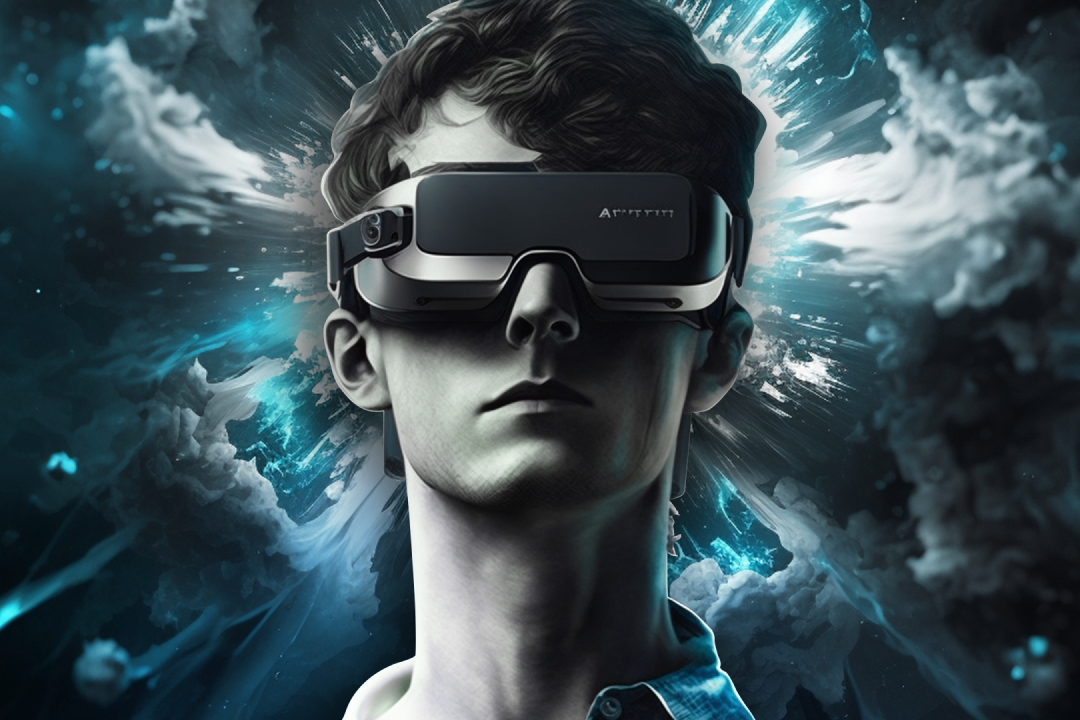
THE METAVERSE & AR/VR
A Parallel virtual plane that compliments but does not replace our existing and future world.
if you haven’t already, you need to recognise the commercial and cultural presence that this thing has, not as a standalone industry, but with its connection and impact it is already having on us.
Something close to home for starters; In the lead up to the launch of their new electric vehicle range, BMW simulated their production line in the metaverse using VR, building virtual cars on a 1:1 scale, for six months before they settled on their final configuration of the factory. They went into this process believing they had the makings of the best factory in the world. After six weeks of testing their original designs in the metaverse, they realised it could be better. The design subsequently changed by 30% before it was actually implemented.
As reported by Time magazine, in the first six months of 2022 the word ‘metaverse’ appeared in regulatory filings more than 1,100 times, 2021 saw 260 mentions, and the two decades prior to that - there were less than a dozen mentions in total.
Meta (Facebook), Amazon, Apple, Google, Nvidia, Tencent are all re-organising, re-writing job descriptions and reconstructing their product offerings to ready themselves. And finally, McKinsey estimates that corporations, private-equity firms and venture capitalists have made $120 billion in metaverse-related investments during the first five months of 2022.
In 2021 there was $60-70 Billion spent on cosmetic non-functional goods (compared to around $5billon in 2015). The game Fortnite has sold more in each of the past four years in virtual apparel than Dolce & Gabanna, Prada & Gucci - which are huge cultural moments! This has not been seen as a hype cycle to these Luxury Brands; Gucci was the first Luxury Brand in October 2022 to launch their own virtual space called the Gucci Vault Room in the virtual Real Estate Platform The Sandbox. Dolce & Gabbana’s nine-piece NFT collection set a record of nearly $6 million, Burberry has an NFT collection in Mythical Games’ Blankos Block Party blockchain game, and the Balmain and Barbie partnership features ready-to-wear pieces, accessories, and exclusive NFTs.
So what we have is an environment being connected to by hundreds of millions of people every day, on the receiving end of hundreds of billions of dollars worth of investment from some of the biggest companies in the world, a presence being built by some of the most storied brands in the world, and commerce in the 10’s soon to be 100’s of billions of dollars. Far too big to be ignored.
Currently, from what I can see, the current association with the Metaverse is its novelty. Essentially the concept that on a new virtual plane you are able to create an avatar that reflects you or a version of yourself, roam around a digital world, network in the same ‘room’ as people who have physically located thousands of miles away, and using a virtual currency, not only play games and exchange goods, but create your own games and your own goods that are displayed in the same arena as the likes of Atari & Prada.
Put this alongside the aforementioned facts and figures and couple it with the fact that the virtual currency exchanged in this world can actually be monetised and transferred to currency for use in our physical world, it is clear that there is a new industry in this element of the Metaverse alone, creating new jobs and a new arena for creative s to thrive and for people to spend some time.
Now to remember the sub-heading to this section, ‘to complement but not replace our existing and future world.’ A large portion of the Metaverse is a novelty and I believe will fall off. But the idea of digital entities being visibly projected into our physical world to enhance the experience of it I think is the element that has the most parallels to be drawn. Imagine instead of looking at pictures of the clothes you’re thinking about buying online, via AR and VR you would be able to see yourself wearing these clothes, make a more informed decision about your purchase, increase your buyer satisfaction and reduce your carbon footprint created by returning half of what you buy. If this still feels too cosmetic, Johns Hopkins recently performed their first pair of surgeries on live patients using augmented reality headsets - the head of neurosurgery said that it was like driving with GPS for the first time, it didn’t do the surgery for you but it enabled you to carry out the surgery better than you cold before. The parallels to be drawn across industries really are huge.
Take the word Avatar and think instead of ‘Digital Twins.’ Take the idea of using AR, VR being used to create for a parallel world and think about them being used to create, develop, construct, educate, operate, maintain and upgrade our physical world and therefore our experience of it.
The movement in this arena is rapid and if we avoid it because we don’t understand start to re-tool, we will quickly be swamped by around 3.5 billion Gen Z’s and young millennials with a vast amount of spending power, who care about the environment, authenticity and setting new trends. They have grown up blurring the physical world with a virtual one so would A) have no qualms about setting up new processes in the industry based on the concept before we do, but would B) if we were to see them as our near future clients, see a huge amount of value in our improved and streamlined services if we were to re-tool ahead of them. If clients of the older generation boggle now about the complexity of the industry, imagine how the next generation will boggle if we don’t start to Amazonify the industry!
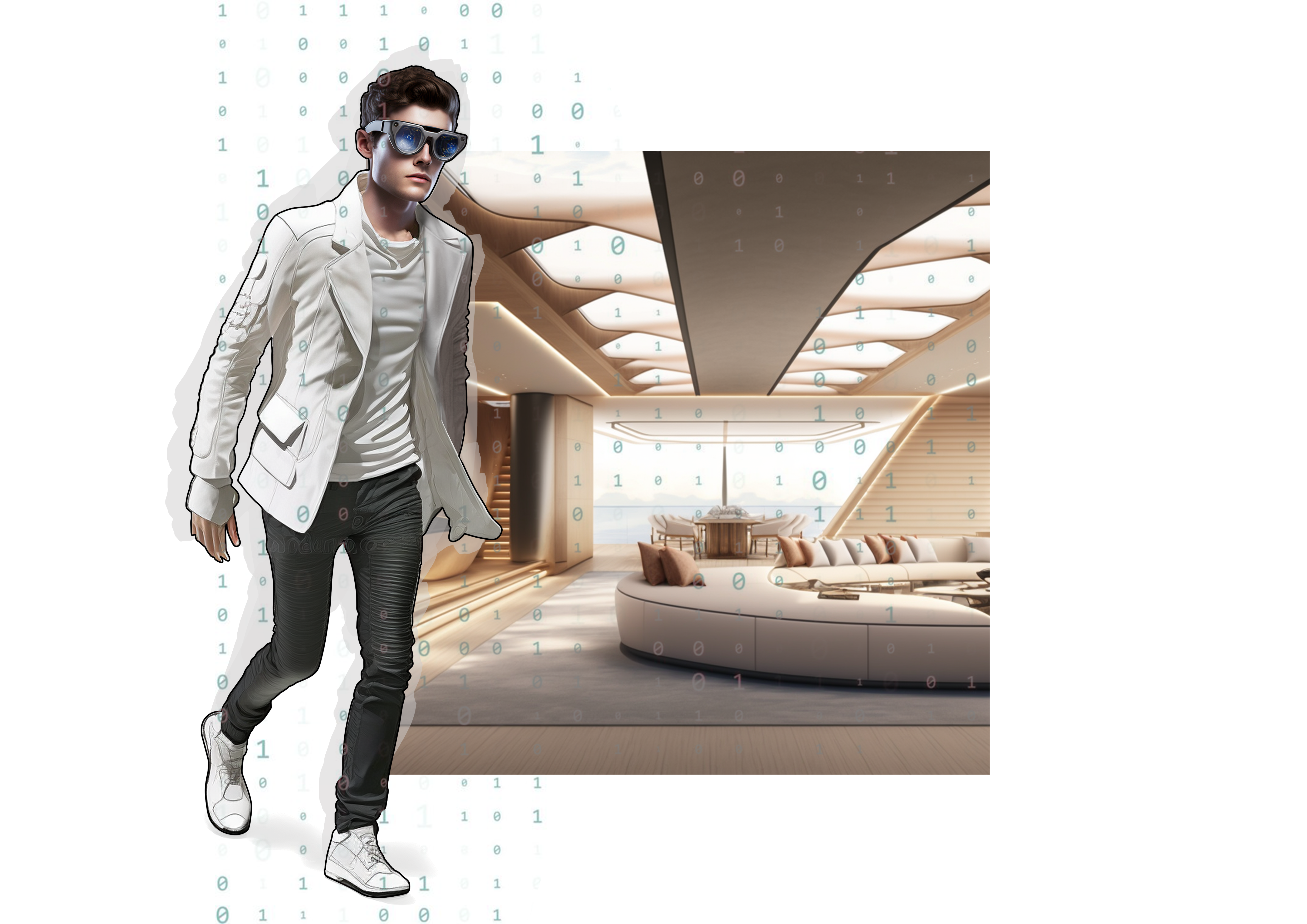
BIG DATA & AI
In my opinion, apart from the metaverse, Big Data & AI (Artificial Intelligence) have the most to offer our future with regard to its design. Big Data is basically a vast amount of data, that’s gathered massively quickly from a huge variety of sources. Via a variety of processing platforms, you are able to gather Big Data and align it with your specific business goals. AI in turn is basically the process where a machine gathers information, perceives it and suggests a conclusion as a result of this process. The most relatable examples of AI are largely regarded ‘Weak AI.’ You asking Alexa for example to play you some Sunday morning music and by combining the music you like, with music that is globally associated with Sunday morning, to play you a selection that you have a pretty high probability of enjoying, is an example of ‘Weak AI.’ ‘Strong AI,’ is where things get interesting.
So current scenario; you begin a project by spending a few hours (days, weeks, months, depending on how much of yarn you want to spin....) researching online, collecting images from Pinterest and hopefully drawing upon a few things you and your team have learnt along the way. You then formulate this information, do a few sketches, collect some finishes and present it to your client. The reality is that the data set you are drawing from here is actually a bit of a joke compared to what we now actually have access to. Imagine you have a client with an old estate in the British countryside that they want to catapult into the next generation, or you and your team are working on the BIM for a new mixed-use development. Imagine that any and all information ever that relates to the historical, contemporary and conceptual architecture, existing similar projects/design strategies (including the pros and cons encountered in their delivery), existing and emerging technology and the behavioural traits of your specific client or target market is all stored in the cloud (within Big Data). Imagine then that there is a tool capable of synthesising all of this information and providing you with palatable outputs enabling decisions to be made for a project that are more informed than ever before.
This digital collaboration between Big Data & AI is very much in its infancy, but it is currently being professionally utilised, and the potential is huge. It is not a million years ago that we had to listen to a dial tone to connect to the internet, and look at us now!
The likes of Midjourney, Dall-E and DreamStudio. These are all examples of AI art generators and how all of this tech can begin to be used to aid the design process. All of the images in this article have been generated using Midjourney, I set the parameters, the engine generated a selection of images, I collated them, made a few adjustments and refinements, and that was that! What you see here is a very raw insight in what is capable through AI currently and open your eyes to what it will be capable of in the future.
Now I know for a fact that there are design companies out there currently using this technology in their designs. Whether they plan to be transparent about their use of it or pass it off as entirely down to their own mind palaces remains to be seen. I however would argue, we should actually be celebrating the power creatives now have at their finger tips and use it to create things better and more original than ever before.
Like all hype cycles, the impact of machine intelligence on jobs will be overestimated in the short term and underestimated in the long-term. There will be billed potential that never comes to fruition, but there will also be elements that become fundamental to our future working processes,
From what I can see, efforts are being made to automate detail design, together with drawing production. Both of these tasks are highly demanding and require sizable teams to carry out mundane work, and coordinate design changes. AI could ultimately bring about reductions in head count at firms, allow for the dream about having more time to design key elements and not get bogged down in the weeds of a project. It may be that we need to adapt our business models and fee structures with potential client push back in the knowledge that ultimately it may mean things can be completed faster. However, this eventuality would then just increase the capacity for more projects. Either way, measures to survive the impact if AI in design should start to be planned for!
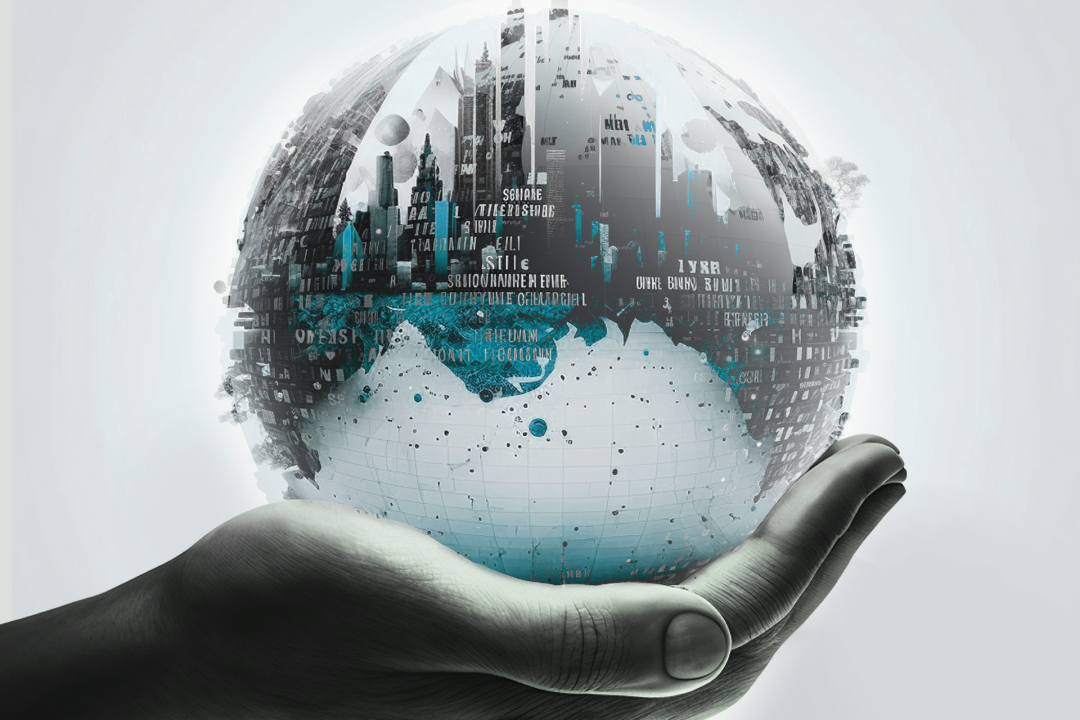
AI is already well integrated into big elements of industry; self-driving cars, smart assistants, healthcare, finance, social media monitoring and the rest. It is used to help navigate, diagnose and predict more than we can fathom, and the view points on how it will be placed in our future are vast. It is only just beginning to be documented on the impact AI could have on design. Our general tone being that, “AI is no substitute for REAL creativity.” Firstly, lets not let the tail wag the dog, in a world of Pinterest moodboards vs the era of Edward Lutyens...REAL creativity largely fell off the wagon a while ago. Sure there are exceptions, but broadly but we’re definitely not testing well on the originality front. But we need to move towards embracing it, take the best of it, re-discover the best of ourselves as designers and re-package our services.
Currently the output from platforms such as mid-journey only generate 2D images, and the capacity to factor in constraints such as floorplans and dimensions to implement into a design are nearly non existent. But it has already developed massively in that time so the idea that this could soon have those capabilities, or the capabilities to be a plug-in to a more practical software is far from a far-fetched notion.
As a case study Augmenta are a company looking to automate the detail modelling design for the construction industry, they have recently released their electrical design platform, and in due course will release their structural, plumbing, pre-fabrication and mechanical platforms. This is one example of many firms and software companies looking to develop solutions to ultimately fully automate their BIM. The short term of this is that it this wont offer much in the way of bespoke one off solutions, but it does have the potential to release a huge bottle neck in bread and butter projects & tasks saving the larger architectural firms large amounts of resource and offering lots of promise to those smaller firms working on more specialist projects, that help may just be around the corner.
Blockchain - A Potential Purifier
A mini-section just to touch on how Blockchain could help to make a more transparent future. The current association is its relation to Cryptocurrency and NFT’s, which both are shaky concepts at best in the current climate. However Crypto and NFT’s are just examples of application. There is actually huge potential in the fundamentals of a Blockchain. It is essentially a ledger, a digital chain that stores any information in relation to ‘a thing’ from it’s inception to creation and beyond, each new layer of ‘the thing’s’ existence is a new link in the chain. This chain is immutable, once a link is in there it cant be changed. The function of ‘the thing’ can be changed or developed but this would be a new link in the chain, not a modification to links already in there. A Blockchain can relate to tangible ‘things’ or intangible ‘things,’ and the important thing about it is the transparency that it offers. Whomever has the appropriate permissions is able to see the full Blockchain and therefore see the provenance of ‘the thing’ in question.
This, therefore, has the potential to be applied to Banking and Fintech to apply transparency to their dealings, and more importantly to us it could be applied to products. NFT’s as context (Non-Fungible Tokens), are most widely associated with Digital Artworks, but it is actually any digital file that sits on a Blockchain. But to use digital art as an example; You have an NFT Digital Artwork of a Bored Ape, now visually this is easily replicated, Google an image of one, bang it on a screen and you have what looks like an NFT. Exactly the same as you could commission a Thomas Crown Affair style forgery of a Monet, hang it on your wall, spin some story about why yours is real and the one in the MOMA is fake and who knows maybe you could pull it off. However, where with the Monet would require a team of professionals to deduce its authenticity with actually no 100% guarantee. With the NFT you would immediately be able to examine the Blockchain it sits on (unless you have just Google searched, in which case the jig is already up) see who created it, who has owned it previously and therefore it’s authenticity.
Imagine then the way this could be used with products and how the digital world could be used to complement and enhance our physical one. Whether it is an Artwork, a chair, a car, a house or an H-Beam used to construct your house, the NFT would essentially be the Digital Twin of ‘The Thing’ and every product could be easily and transparently traceable from who designed it, how it was made, using what and, from where, to where it has been, how it got there, who has owned it etc etc all because it sits on a Blockchain.
Smart Contracts are programs stored within a Blockchain that generally enable automated processes to take place once certain pre-determined conditions are met, This could mean that when you buy a product online, you actually buy the NFT, it’s Digital Twin. Because its written within the Smart Contract that upon purchase of the NFT, the buyer receives the tangible asset by extension. You would get your product via an unchanged UX process but it would mean that your order can automatically be channelled into an automated smart manufacturing and/or delivery process, which enhances efficiency, sustainability, and end to end transparency.
Industry 4.0 & The Smart Factory
Industry 4.0 is a super broad term used to present the idea of the space in which future technologies and processes will materialise and cater for our consumption as a result of vastly enhanced connectivity and automation. All of what has previously been mentioned in this article forms elements of a movement towards Industry 4.0, it also embodies the structure within which all industries in existence in theory operate, logistics, IT, Security etc, so this article doesn't even flirt with scratching the surface. However one element I would like to touch upon as an extension to Big Data and AI is the idea of Smart Factories & Mega Factories.
Smart Manufacturing is a vastly improved production process that is still under heavy development, but is born out of the need for industries such as automotive where increased demand, requirements and impact of unforeseen production issues mean that traditional methods just aren’t cutting it anymore. So to meet their financial targets there has been a vast need for them to invest in new processes. Smart Manufacturing targets these issues and is ultimately about increasing productivity and creating an intelligent production environment. It enables virtual planning and organisation therefore streamlining of traditional design and testing, to then be facilitated by a largely automated production process. This heavy use of automated procedure then creates the opportunity for a closed-loop feedback process. This enables self-learning via real-time data collection where any changes to environment or requirement to meet production goals can be quickly corrected or adapted. All aided by the broader concepts of, AI, AR and Big Data.
Aside from the inputs to facilitate in Smart Manufacturing, the input information for the actual product required is the Digital Twin (what we touched upon in the Metaverse section). Basically the digital design file. The file you use to laser-cut a piece wood is essentially a Digital Twin. However the piece of wood you are laser-cutting is most likely just one element of something you are producing, the Digital Twin in this context is the file for the full product that then gets fed into the Smart Manufacturing process which would then split it up into it’s various elements for production and bring them back together for assembly.
All of the above is a structure that could be used as a closed loop system for one company. However, creating such a process is naturally obscenely expensive so would makes sense for very few companies and be realistic for even fewer. So this is where the potential of Mega Factories come in, the idea where multiple companies via combined investment could have one facility to produce all of their requirements. Even if there are nuances between what each company wishes to produce, there is no reason why one Mega Factory couldn’t produce for companies who operate in very different markets. The benefits of this all means that demands can be met, issues overcome and developments are easier to facilitate.
Short-term this vehicle is mainly being developed for huge corporations catering for mass-markets. In the ‘Turning off the Blinkers’ section of this article I mentioned that there we do have products required for our industry that come from industrialised processes, this will fall into that huge corporations category, but longer term what if these concepts start to infiltrate further down the line and begin to clarify those ‘Murky Middle Bits’ of our industry, creating more flexibility and capability for us as designers whilst providing our clients with better value in a vastly streamlined process? Designers, Architects, material and goods suppliers/fabricators, joiners, furniture makers etc could all be part of a Smart Manufacturing framework whereby they would be able to offer their products and value on a global scale different to ever before.
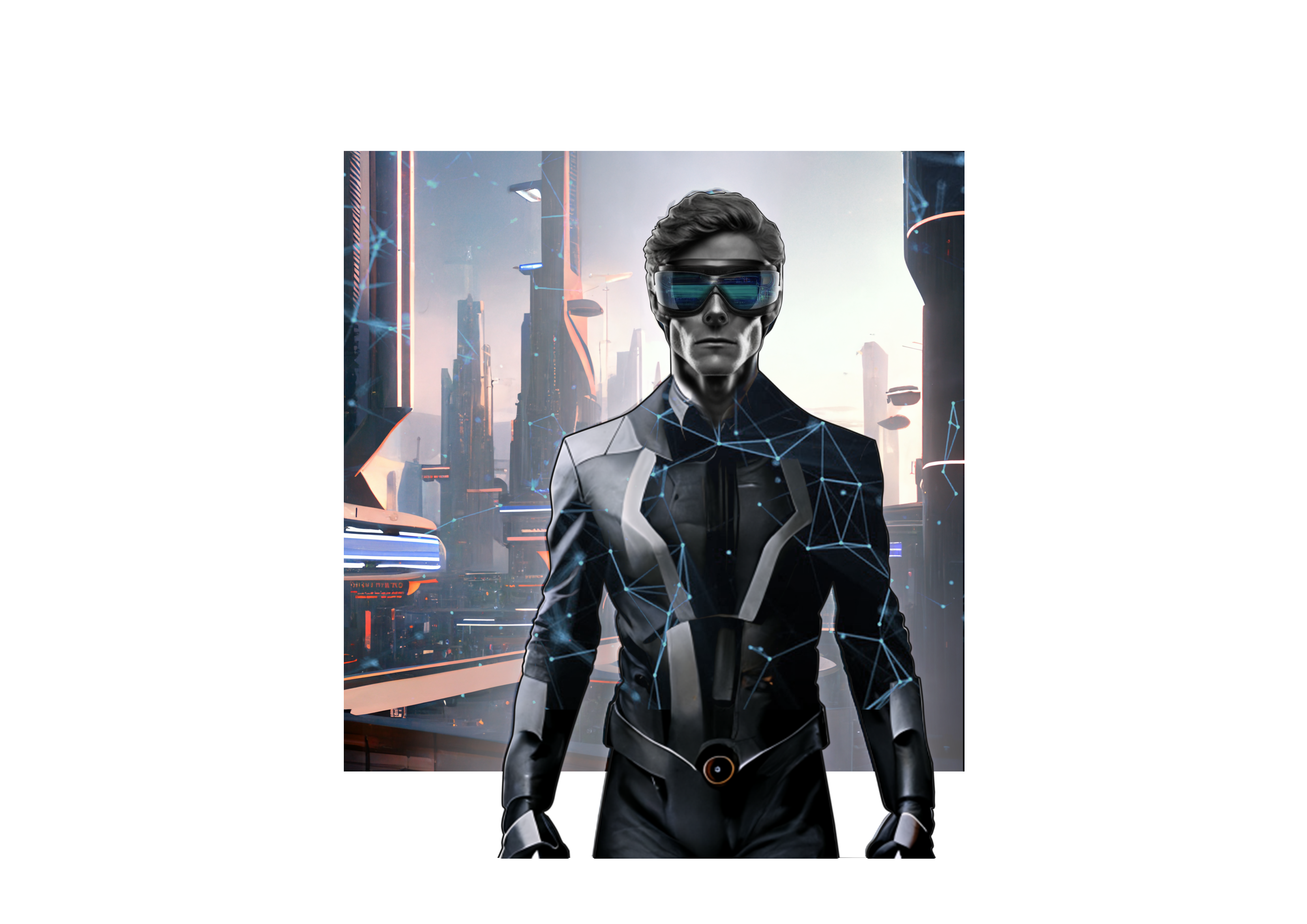
Conclusion
I’d like to steal a few words from the book ‘Outliers’ by Malcom Gladwell just to draw on an example of a major shift change in the IT world as a representation to how much the release in a bottle neck to a system can unlock so much potential within an industry - similar perhaps to what we could see in the design industry over the next 5, 10, 20+ years. In the mid-60s a revelation to how computer programs were written occurred; the change from computing cards to time-time sharing.
Computer cards were what was used to create a computer program. These were literally thousands of cardboard punch cards with keypunched lines of code that would be assembled, walked over to a mainframe computer (which could only run one program at a time so a time needed to be scheduled) to test the program. If even a single error occurred you would need to track down the error and begin the process all over again. Meaning you would only actually be ‘programming’ for minutes on the hour because of the associated admin required. It was said that in this era, you were not taught programming, you were taught patience.
Enter Time-Sharing. It was realised (not by improving the programmers but by improving the tools they use) that with more powerful machines that could handle more than one appointment at once, with a re-written operating system the mainframe could share it’s time and be trained to handle multiple tasks at once. Multiple terminals were built, connected by telephone lines from the programmers office (no more walking round the corner) to the mainframe, and everybody could work at the same time, key in a few lines and see the results in real time. This saved time and increased the output and the work's ultimate value. Bill Joy, a hugely important software developer said, “Do you know what the difference is between the computing cards and time-sharing? It’s the difference between playing chess by mail and speed chess.”
Between all of the concepts mentioned in this article, and likely many more, I believe what we have are the ingredients to give us the key to unlock a massive bottleneck in our industry.
Imagine; A client who requires a new build home in any region of the world, and they approach us as designers to facilitate this. With the knowledge of and access to all of the tools required to do so, we have our initial meeting and ascertain what is important to them and what they see value in. Once we have a full understanding of the style and function parameters we start to utilise AI and input the knowledge of the client’s aspirations into our systems. This quickly draws upon the infinity of design data of any design ever created or delivered. If it is just a case of interior design within an existing structure then the output could have those constraints as a parameter. If design and architecture are involved then other constraints such as regional challenges e.g. physical, regulatory, and material availability etc could also be set as parameters.
As a result AI then delivers a concise selection of data relevant to the brief (including recommended initial budgets) We as designers make decisions about what options best suits the client, makes any refinements required and presents to the client (potentially via a remote meeting in the Metaverse using AR).
Post approval, decisions are made based upon where the client sees value as to what elements can be catered for using fully automated processes and what may require more design focus and require a combination of automated processes and hands on design. A digital space is created where we can virtually explore, experience and refine, this is then shared with the client for the same process to ensue. The final processes are then engaged to create a robust Digital Twin that holds the blockchain data relevant to all details, finishes and specifications. Any physical samples can be made available, and the Digital Twin data is then released to the delivery channels (options to which will have been agreed previously) and production can begin.
Depending on what has been underpinned as high value and medial value to the client in end result, the most efficient route for delivery and manufacture will again be ascertained via a combination of Ai and human decision making. Elements of low-value will be procured and/or produced in/from a company/place with the least economic impact to the project and client. Then for example if an element of high value is required such as a dining table made from a piece of bog-wood found in Cape Sarichef, Alaska because this is where a client has a strong emotional connection, but the project is in Cape Horn, Chile. Then the best way of extracting the wood, place to send it to be made into a table in relation to the location of the project and the level of quality required. would be ascertained to achieve the same relative value for the client. Instead of having your Poltrona Frau Archibald armchair made in Italy and sent via cargo ship to the house, the Digital Twin scenario would be implemented and the chair would be made in a Smart Mega Factory more locally, saving on shipping costs, import duties and cost to the environment etc etc.
Construction on site (possibly involving elements of mobile smart manufacturing, such as on-site 3D printing etc) could then be largely remotely managed with site meetings held in the virtual space to keep an eye on progress and solve any issues, and clients can log in from anywhere in the world to oversee the value coming to life.
The construction industry is one of the oldest, most important industries on this planet. It is also an industry that accounts for 40% of global Co2 emissions and has been documented as the second least digitised, second only to Farming and Hunting. A fair assessment of this I would say in turn is that it is one of the industries most reluctant to change, that it has a hell of a lot of work to do before net-zero in 2050, and that any industry that contributes to its creation (design being one of them) is guilty by association. This with a positive outlook means; there’s plenty of meat left on the bone to progress and profit whilst creating an improved environment to enhance the confidence in our clients to spend money on our services to deliver to them more value in enhanced products via an enhanced process.
Ultimately, in my opinion, what we are looking at is not the replacement of designers, but we are looking at a huge shift in the end to end process of design and it’s delivery. The thing to remember about this emerging technology is that it doesn’t have opinions, nor will it have the power to make final decisions.
We should see these exciting new platforms as a means of lowering the bar to access a provision of a new infrastructure for change, and the tools to drive it. Certain roles will fall of the map, but new ones will open up which should be seen as an opportunity for high value people to carry out high value roles and not low value ones. I believe we will end up with a more refined set of highly functioning designers who do not see the results of AI computation as the end solution, but challenge them and enhance them with their human interaction. To then nod back to ‘The Knowledge (Professional Team) + The Murky Middle Bits (Delivery Vehicle) + The Client = The Value.’ With all of this embraced, we would be able to offer an end-to-end process, where ‘The Knowledge’ actually has it and the suitable tools to access it. ‘The Murky Middle Bits’ are no longer murky and offer clear linear processes to get from A to B in the most efficient manner. ‘The Client’ can have full confidence in the design and how it will be delivered, making them feel comfortable in actioning works. With all three of these elements working with transparency and synergy, true ‘PROJECT VALUE’ is then unlocked to both the clients and any moving parts involved, confidence can be re-built in our industry, it can be fit for the future and we can remain the designers you do need instead of the ones you don’t.


